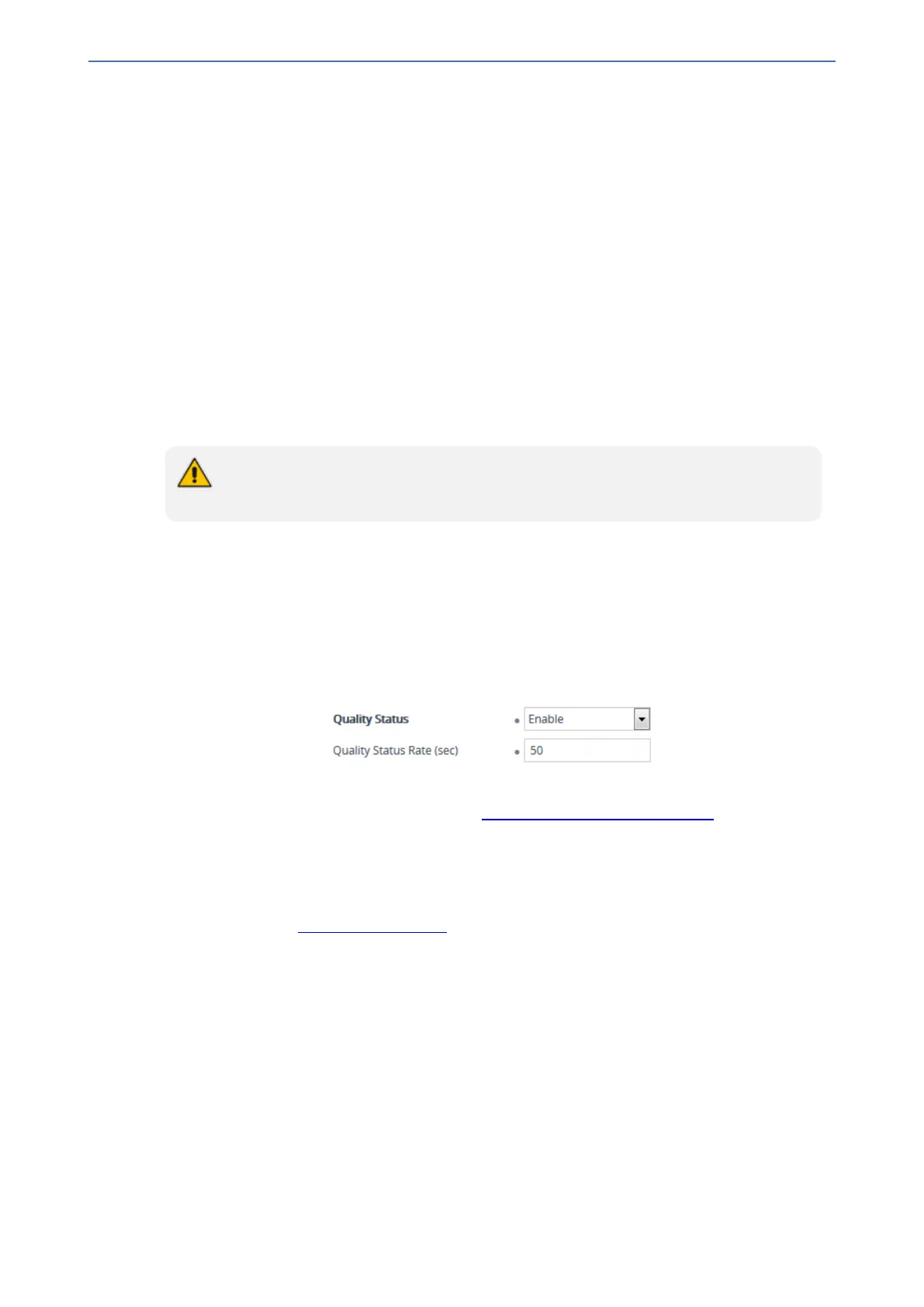CHAPTER16 Services
Mediant 1000 Gateway & E-SBC | User's Manual
Configuring QoS-Based Routing by Routing Server
You can configure the device to allow the routing server to route calls based on QoS metrics (media
and signaling). The device collects QoS metrics per IP Group that you have configured to operate
with the routing server ('Used by Routing Server' parameter configured to Used in the IP Groups
table). The metrics include the following:
■ Signaling: ASR, NER, and ACD
■ Media: Packet loss (Rx/Tx), packet delay (local/remote), jitter (local/remote), MOS
(local/remote), audio bandwidth (Rx/Tx), video bandwidth (Rx/Tx), and total bandwidth (Rx/Tx)
The device collects QoS metrics for both incoming call traffic and outgoing traffic from the remote
endpoint. It sends the QoS reports to the routing server, where each report can contain the status of
up to 100 IP Groups. If more than 100 IP Groups exist, the device sends multiple QoS reports
(sequentially) to the routing server. The device sends the reports every user-defined period. The
routing logic of where to route calls based on QoS ("good", "fair", and "bad") is configured on the
routing server.
For media metrics calculations, the device's License Key must include voice quality
monitoring and RTCP XR.
➢ To configure the device for QoS-based routing by routing server:
1. Open the Web Service Settings page (Setup menu > IP Network tab > Web Services folder >
Web Service Settings), and then do the following:
a. From the 'Quality Status' [RoutingServerQualityStatus] drop-down list, select Enable to
enable QoS-based routing.
b. In the 'Quality Status Rate' field (RoutingServerQualityStatusRate), enter the rate (in sec)
at which the device sends QoS reports.
c. Click Apply.
2. Open the Remote Web Services table (see Configuring Remote Web Services), and then for
the Remote Web Service entry that you configured for the routing server, do the following:
a. From the 'Type' [HTTPRemoteServices_HTTPType] drop-down list, select QoS.
b. Click Apply.
3. Enable voice quality monitoring and RTCP XR, using the 'Enable RTCP XR' [VQMonEnable]
parameter (see Configuring RTCP XR).
Configuring an HTTP GET Web Service
You can query (HTTP GET) an HTTP server and use the response for various functionality such as
SIP message manipulations, tag-based classification and routing. To configure this, you need to
configure a Remote Web Service to represent the HTTP server and a Call Setup Rule to define the
search query and the action you want done based on the HTTP response. The following example
queries an HTTP server (at IP address 52.7.189.10) using the caller's (source) user name in the
server's path /v3/phone. When a response is received from the HTTP server, the device adds the
value of the HTTP response body ("Alice") to the From header in the outgoing SIP message.
- 255 -

